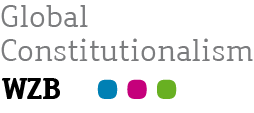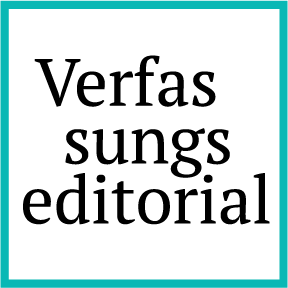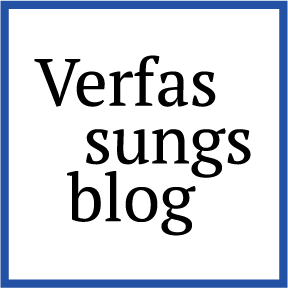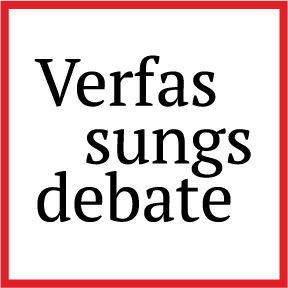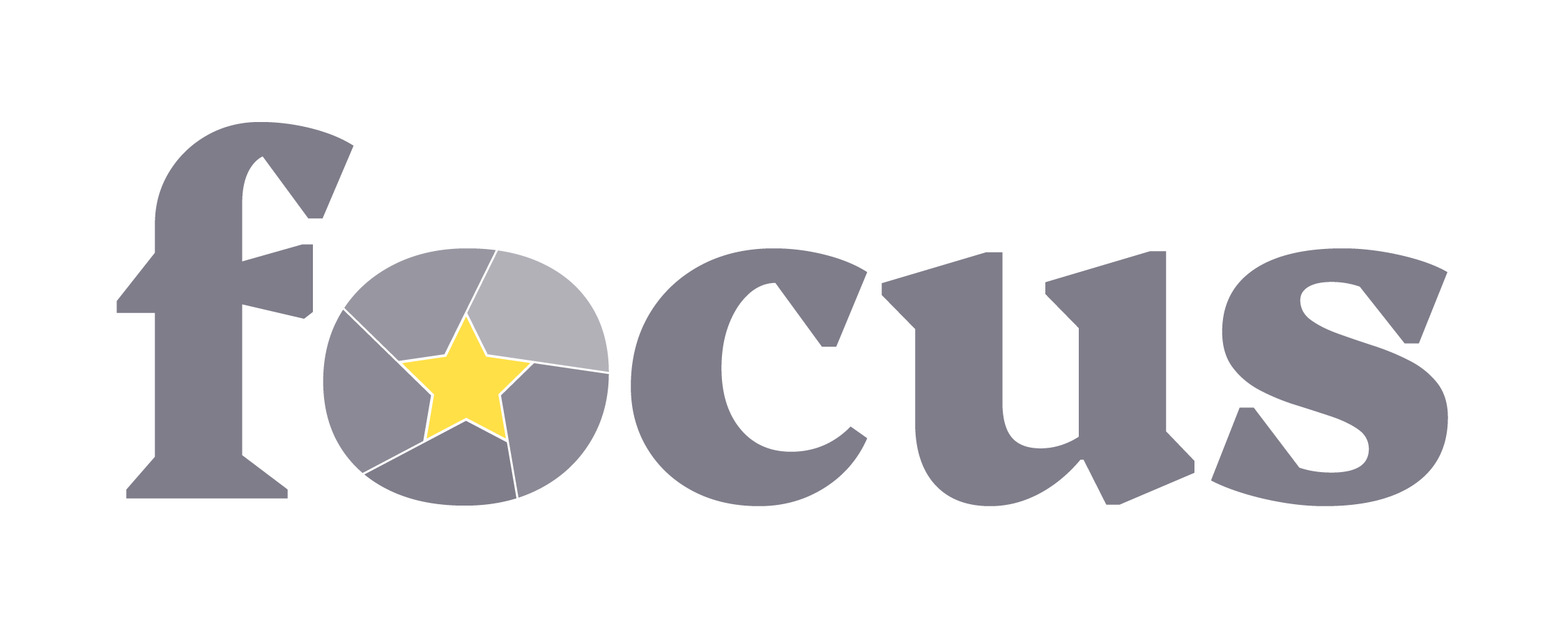Accent on the Language of Instruction
Exploring the Linguistic Dimension of Article 13 CFR
Language of instruction in European higher education is becoming an increasingly contested issue. Typically analysed in reference to the protection of linguistic minority, language policies are now at the centre of debates on internationalization of higher education and the rise of English-language instruction across non-English-speaking Member States. Although these developments have been widely debated in many education-related research fields, little attention has been paid to the question whether language policies – be it mandating or restricting foreign languages – can infringe upon academic freedom as a legal right. At the same time, the question has been already raised in EU law. In the case Boriss Cilevičs and Others (C-391/20), the Advocate General suggested that Latvian law limiting heavily the use of foreign languages in higher education “restricts the academic freedom of teachers (set out in Article 13 of the Charter)” (para. 109). However, the Court of Justice (ECJ) did not discuss the matter. Therefore, while the ECJ judgment seems to leave Member States a significant discretion to regulate language in higher education (for more details on the case see van der Jeught in this symposium), the broader conceptual question about the scope of the linguistic dimension of Article 13 CFR – if any – remains. Without offering straight-forward answers, this blog post explores briefly what interpretative guidance regarding the language of instruction can be found in other international and national legal systems (see also Article 52 CFR on the interpretation of EU fundamental rights) and what kind of questions remain open. It then brings these insights together to preliminarily discuss how they may feed into possible interpretations of EU law.
More than a theoretical puzzle
Academic freedom has many dimensions, and many of these can be linked to language. This post focuses on one dimension in particular: the language of instruction in higher education. Academic freedom in instruction (teaching) is generally taken to extend to both substantive content and pedagogical method, with language arguably belonging to either category, frequently in a discipline-dependent manner. While some argue that methods warrant more limited protection than content (Finn 2020; see also Macfarlane 2021), there is strikingly no legal or philosophical scholarship that addresses the linguistic dimension of academic freedom explicitly or attempts to conceptualise it. This leaves many questions about its scope open. Nonetheless, national court cases and ongoing regulatory debates have highlighted various kinds of situations in which language measures – driven by different actors and motivations – can have an impact on academic freedom.
The dynamics are easiest to see in concrete disputes and controversies, and three brief examples suffice: In Italy, Politecnico di Milano sought to convert all its graduate programmes to English-language instruction as part of an internationalisation strategy, with some staff challenging the institutional measure in court as a violation of their individual academic freedom (see Galetta 2021 for an English summary of the case). The Latvian law restricting foreign-language instruction in universities (with exceptions), leading to the ECJ judgment mentioned above, raised concerns about both the institutional and the individual dimension of academic freedom – intertwining, moreover, with issues of protection of linguistic rights of the Russian minority (see van der Jeught). In the Netherlands, the government has recently proposed stricter limits on English-taught programmes to strengthen Dutch as the language of academia and, according to some reports, to better control the inflow of foreign students – with some seeing the move as problematic from the perspective of institutional autonomy. Despite their diversity, the cases show that language rules engage a complex bundle of rights, interests, and duties: the right to education, minority protection, the state’s linguistic identity, and, as many have and continue to argue, academic freedom. This underscores that what might appear to be a marginal theoretical puzzle has very concrete applications. Anticipating further legal disputes, it is timely to explore – beyond the existing case law of the ECJ – how academic freedom as protected by Article 13 CFR may bear on language regulation in Europe’s universities.
Academic freedom and language across jurisdictions
Little authoritative pronouncements on Article 13 CFR exist in EU law. The provision does not explicitly refer to any linguistic aspects of academic freedom. In Commission v Hungary (C‑66/18), the only judgment on Article 13 CFR to date, the Court of Justice confirmed that the freedom encompasses both an individual and an institutional dimension, as well as an obligation of the Member States to protect it. However, given the nature of the case, the judgment does not touch upon language either. While language in higher education is at the centre of Boriss Cilevičs and Others, academic freedom of teachers has been only briefly touched upon by the Advocate General and has not been authoritatively discussed by the Court. This may have to do with the fact that the Latvian Constitutional Court had previously assessed the case from the perspective of academic freedom (see also van der Jeught), but perhaps also with a rather wide-spread silence of authoritative sources on this issue.
The right to education, often seen as the “home” of academic freedom in international law, also covers higher education. However, the right to higher education remains one of the under-theorised aspects of the relevant provisions (Kotzmann 2018, p. 17). Language issues are often seen in light of the requirements of minority protection and/or discussed in the context of obstacles to access education (Kotzmann 2018, p. 40), with no international provision requiring the states to actively provide public higher education in minority languages (van der Jeught). Freedom of language is protected as part of freedom of speech but does not grant a right to use any language in public institutions (see van der Jeught). On the other hand, while academic freedom has been increasingly recognised as inherent in the right to education, it has not been (to my best knowledge) discussed under the international legal framework together with issues of the language of instruction so far. Similarly, the European Convention on Human Rights and the existing case law of the European Court of Human Rights do not provide clear normative guidance. Academic freedom is protected under Article 10 ECHR (freedom of expression), a provision that grants protection to the language of expression in some contexts as well (e.g, Şükran Aydın and Others v. Turkey). At the same time, while academic freedom possibly “transcends the scope of Article 10 in certain areas” (e.g., Mustafa Erdoğan and Others v. Turkey), it has so far been discussed only in reference to the substance of professors’ speech, with no cases giving rise to linguistic considerations. Higher education is protected in the Convention system under the right to education (e.g., Leyla Şahin v Turkey, para. 134-142), and the latter generally includes a right to be educated in (one of) the national languages, albeit not necessarily in a language of one’s choice (Belgian Linguistic Case; Valiullina and Others v. Latvia). However, none of the case law on the linguistic aspects of education deals with higher education (indirectly: İrfan Temel and Others v. Turkey on students’ suspension following a request to introduce optional Kurdish classes). Additionally, the Court of Human Rights has previously recognized that states may have different types of obligations in reference to different levels of education (Ponomaryovi v Bulgaria), leaving open the question whether the particular nature of higher education may modify some of the language requirements in education as well.
Depite this rather fragmented and often ambiguous normative framework, academic freedom soft law may provide some interpretative points of reference in cases involving language measures. The UNESCO Recommendation concerning the Status of Higher-Education Teaching Personnel – previously referenced by the ECJ in Commission v Hungary – is the leading soft law instrument on academic freedom, detailing duties and rights for institutions, teachers, and public authorities. For example, “teaching personnel have the right to teach without any interference, subject to accepted professional principles including professional responsibility and intellectual rigour with regard to standards and methods of teaching” and “should play a significant role in determining the curriculum” (para. 28). However, they are also expected to “teach students effectively” (para 34(a), emphasis added). Institutions should be autonomous, including in their academic work, in a way “consistent with systems of public accountability” (para. 17). This is understood broadly and inclusive of, e.g., the quality of their teaching or effective support of fundamental human rights (para 22). While the Recommendation does not define issues of “standards”, “quality” or “effectiveness” of teaching, all can be argued to intersect (at least in some dimensions) with the language of instruction. Therefore, in principle, the use of foreign languages in higher education could be seen as covered by academic freedom in both the individual and institutional dimension, including in public higher education – at least to the extent it affects its quality, effectiveness, and so on. Moreover, any freedom or autonomy granted in this regard will be qualified by requirements of individual professional responsibilities, educational standards, or institutional missions. This can find some support in the (admittedly limited) national constitutional jurisprudence on the language of instruction and academic freedom, e.g. in Latvia (at least in reference to private institutions) or in Italy (at least in reference to institutional measures in the case of Politecnico di Milano). However, the scope of rights recognized for different rights-holders (students, academic staff, institutions) across these cases does not seem to be the same – partly because the facts differ, but perhaps also due to deeper doctrinal differences. The Recommendation further emphasises that both institutions and individuals must respect general human rights, and therefore their freedoms must be reconciled with any linguistic obligations that flow from the right to education or minority protection more broadly. While balancing of different interests may be context-dependent and the operationalisation of such broad concepts difficult, some interpretative inspiration can be found in comparative constitutional research, relevant for EU law in light of Article 52 CFR (see also Ceran, forthcoming).
Preliminary thoughts on the linguistic dimension
While hardly conclusive, the discussion above suggests that there are good reasons for the recognition of the linguistic dimension of academic freedom, including in reference to Article 13 CFR. Such freedom could arguably extend beyond the individual freedom of teachers (as suggested by the Advocate General in Cilevičs) or private institutions only (as encompassed by the Cilevičs judgment; see van der Jeught). Even if this broader scope of academic freedom is conceptually accepted, the freedom is hardly unlimited. The proportionality stage of the analysis will raise complex questions about the relationships between different rights, interests, and objectives – which may legitimately pull into different directions. This notwithstanding, there are interesting questions concerning the interpretation of Article 13 CFR that rest on the (legal) nature of the EU. For example, Article 165 TFEU sets out that EU action should develop the European dimension in education “particularly through the teaching and dissemination of the languages of the Member States”. How – if at all – could this objective relate to the interpretation of Article 13 CFR, be it in general or in the context of particular strands of EU action? Further, how would the linguistic dimension of Article 13 CFR relate to Article 22 CFR (linguistic diversity) or 14 CFR (the right to education)? (This constellation of provisions was raised in Cilevičs. It can be noted that the Advocate General argued that Article 14 encompasses a choice of “a more intensive use of foreign languages in higher education” – whatever this may mean in practice.) Could the linguistic dimension of Article 13 CFR intersect with questions of student mobility and discrimination in access to higher education, matters on which a significant body of ECJ case law exists? The EU will, of course, not be competent to prescribe uniform language rules in education through legislation (due to its limited competence in the field, see Articles 6(e) and 165 TFEU). That said, it can be preliminarily concluded that Article 13 CFR (alone or in combination with other Charter provisions) could set binding obligations for at least some of such issues as raised in EU law – even if academic freedom will at times need to give way to other considerations.
This post draws in part on O. Ceran, “Common Constitutional Traditions? A Comparative Perspective on Academic Freedom in Europe” in V. Kosta (ed), Academic Freedom: Constructing its Content for EU Law (Cambridge University Press, forthcoming). I am grateful to Ihintza Palacín Mariscal for her input into my ongoing work on the intersections of academic freedom and language, and to Anna Krisztián for her comments on the draft of this post.
FOCUS is a project which aims to raise public awareness of the EU Charter of Fundamental Rights, its value, and the capacity of key stakeholders for its broader application. Views and opinions expressed are however those of the author(s) only and do not necessarily reflect those of the European Union or the European Commission. Neither the European Union nor the European Commission can be held responsible for them.
